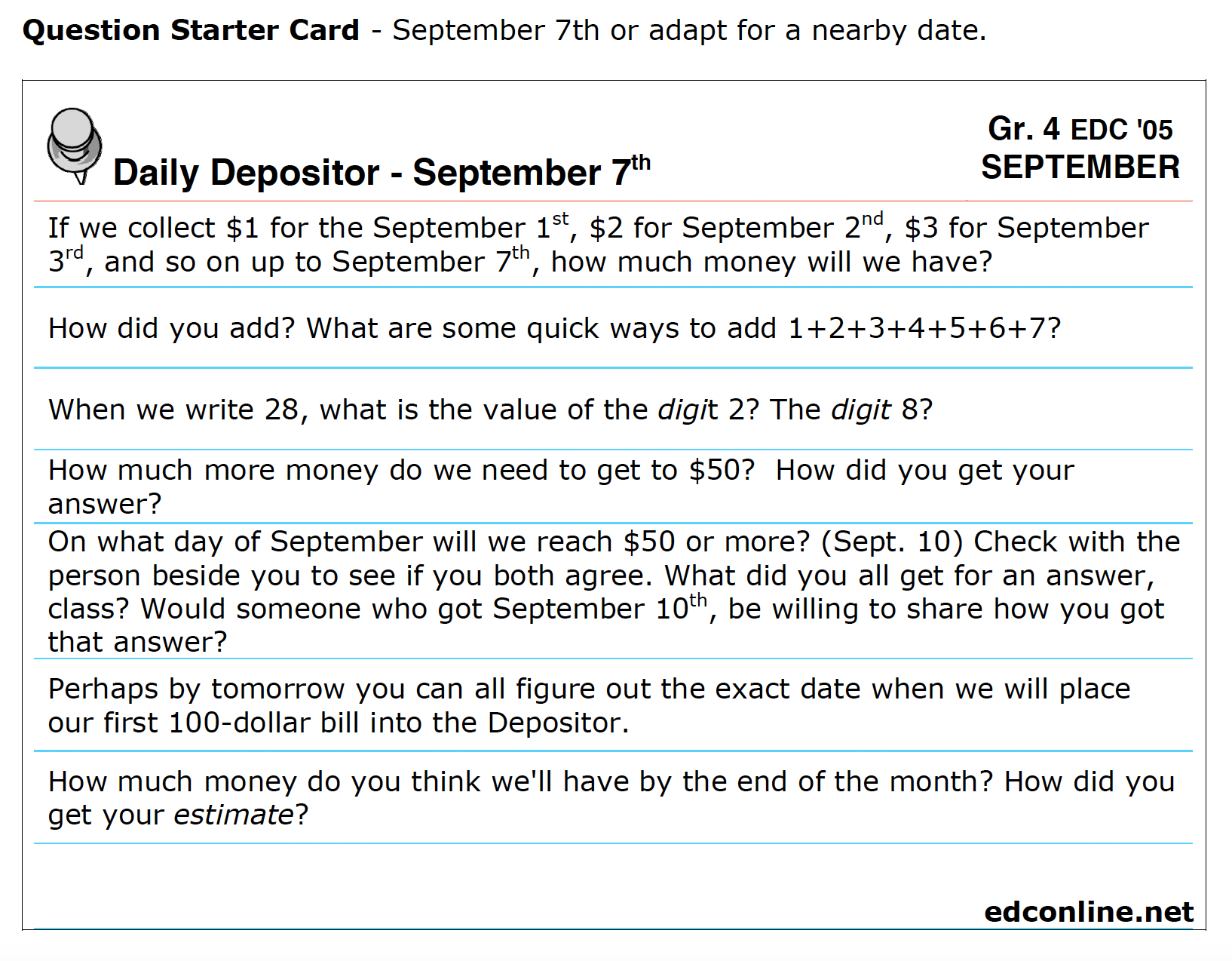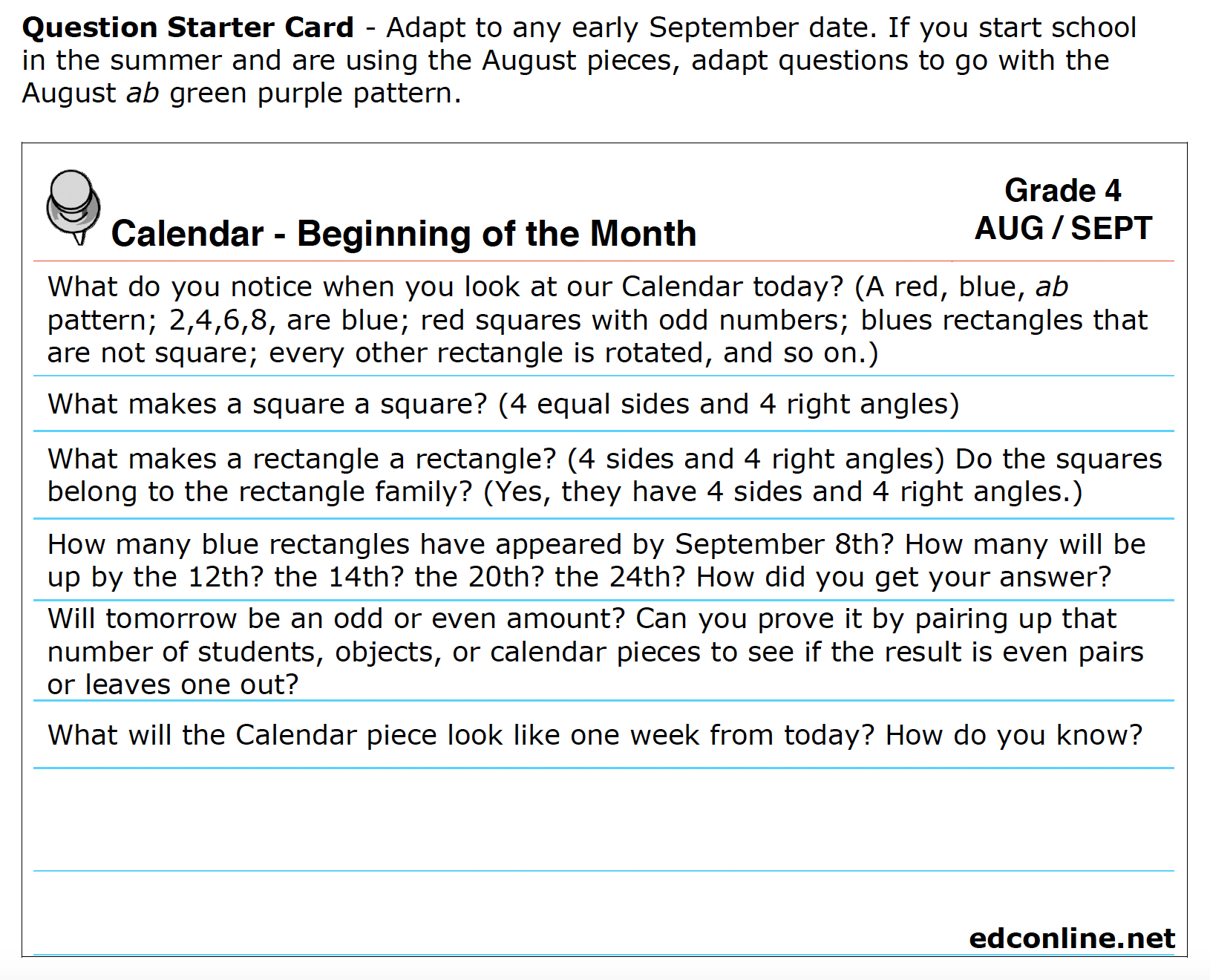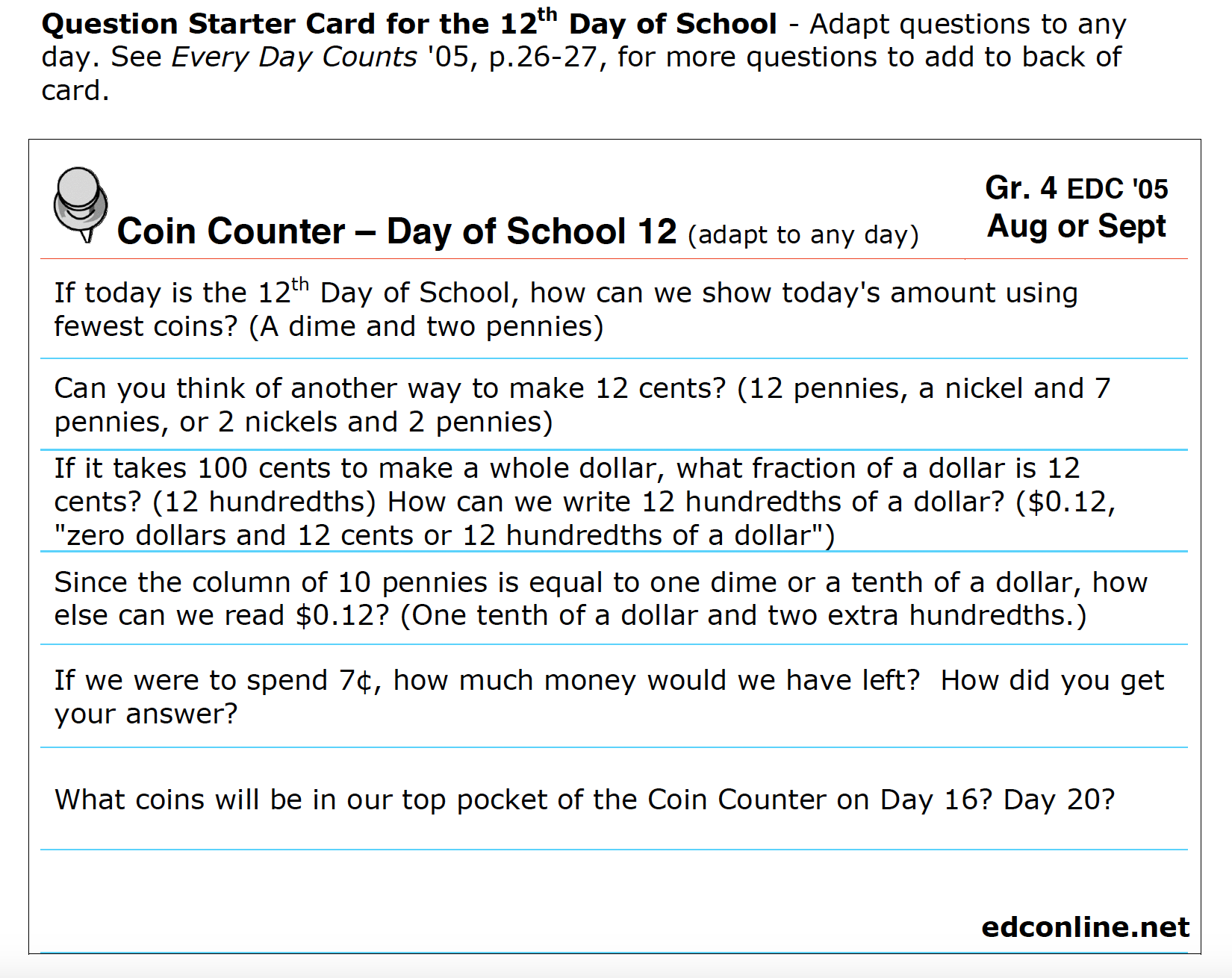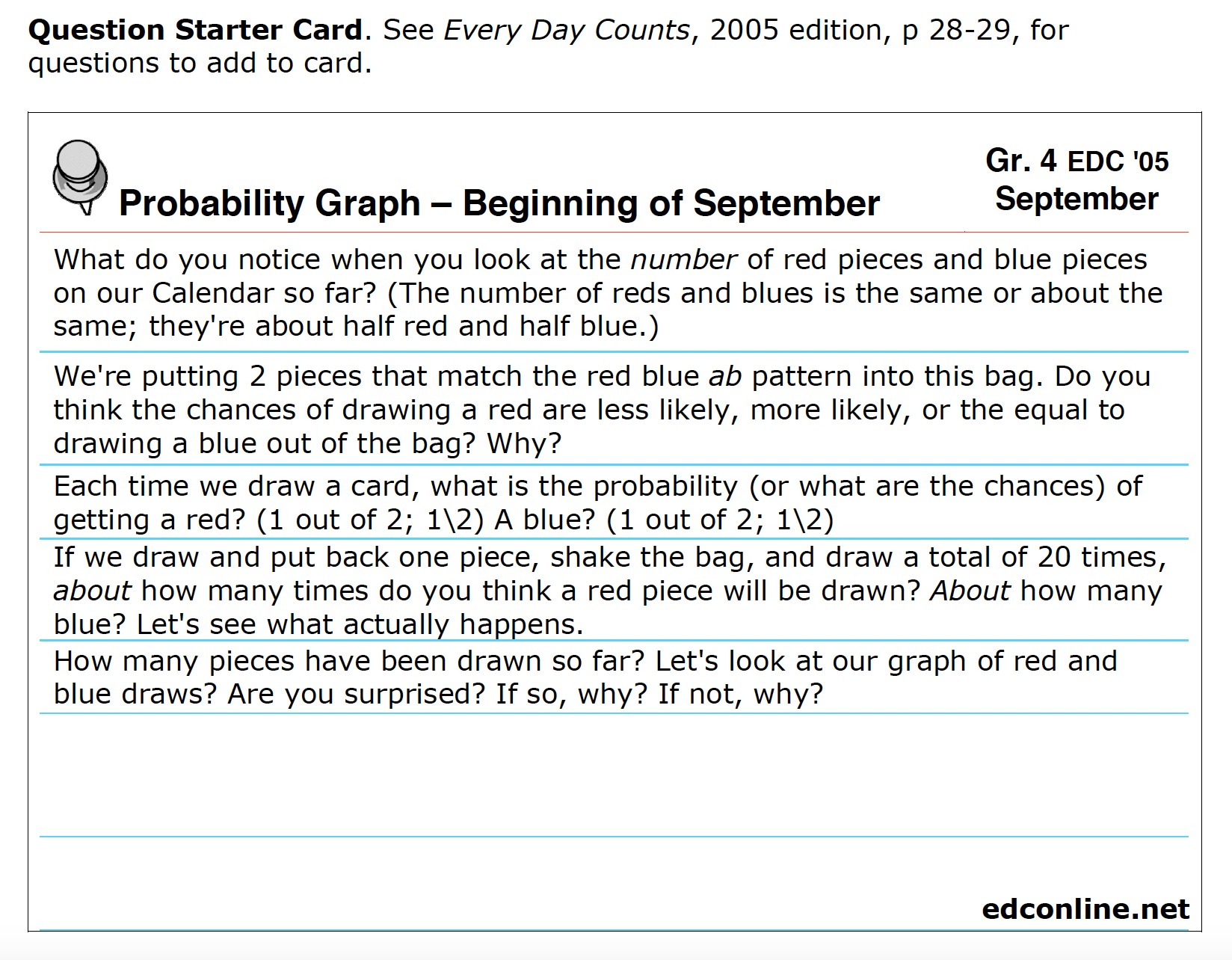Grade 4: EDC Counting Tape – Days of School

Instructor Notes:
For materials preparations, click again on Samples and select Getting Started 4.
Read Every Day Counts Teacher’s Guide, Kanter and Gillespie, Great Source, 2005 or 2012 edition, p. 18-20.
Before Day 16: The Counting Tape focuses on multiples of two the first month. On even numbered Days of School, after attaching a heart to mark the multiple of two, have a number of students equal to the Day of School pair up to show how even numbers breakup into groups of two with no leftovers or remainders. On odd days do the same activity and talk about how an odd number, when divided into pairs, results in one extra without a partner.
You might occasionally record a vertical list of the even numbers and circle the digits in the ones place to examine the 2, 4, 6, 8, 0 pattern. Do the same with the odd numbers to see the 1, 3, 5, 7, 9 pattern in the ones place. You might invite conjecture about why it is only the digit in the one’s place that determines odd or even.
When they pass an oral interview assessment, students can note their progress by coloring in red the x2 facts on a Multiplication Facts Record copied from the back of the T. Edition.
Grade 4: EDC Daily Depositor – Beginning of September
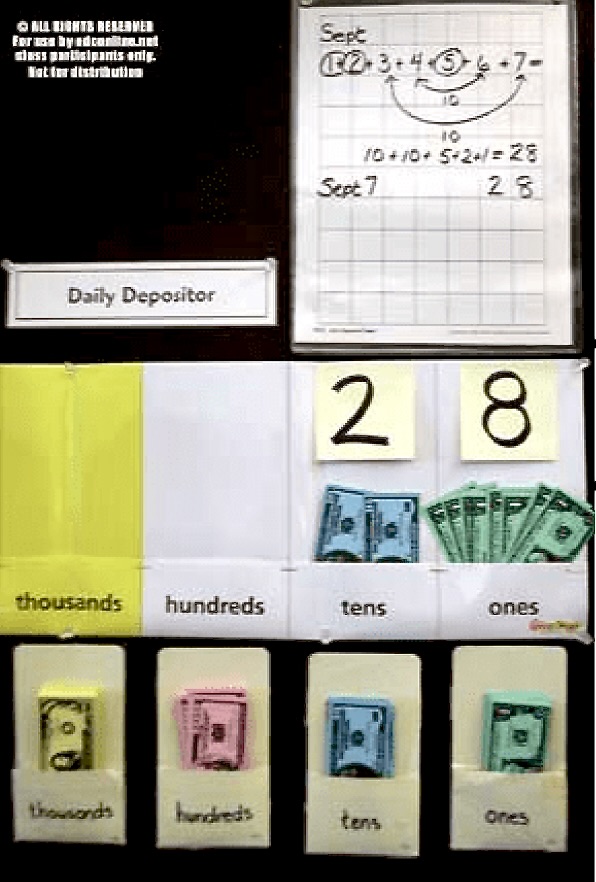
Instructor Notes:
For materials preparations, click again on Samples and select Getting Started 4.
Read Every Day Counts Teacher’s Guide, Kanter and Gillespie, Great Source, 2005 or 2012 edition, p. 21-22.
On September 7: To help students see how money will collect in the Depositor this first month, you might wait until the 7th of September, after the Labor Day holiday, to introduce the Depositor.
Invite one child up to hold one dollar for September first, a second child to hold two dollars for the second, a third child to hold three dollars, a fourth to hold four dollars, a fifth child to hold five dollars for the fifth day of the month, a sixth to hold six dollars, and a seventh to hold seven dollars. Have students predict the total.
Then encourage students to share the various ways they added to get 28. Let the seven students holding the money combine their amounts to come up with two groups of ten ones to trade for two $10 bills. Deposit the two tens and the eight extra ones into the appropriate Depositor pockets and use post-its to record a digit above each pocket to show the total.
Grade 4: EDC Calendar – Beginning of September or 1st Month of School
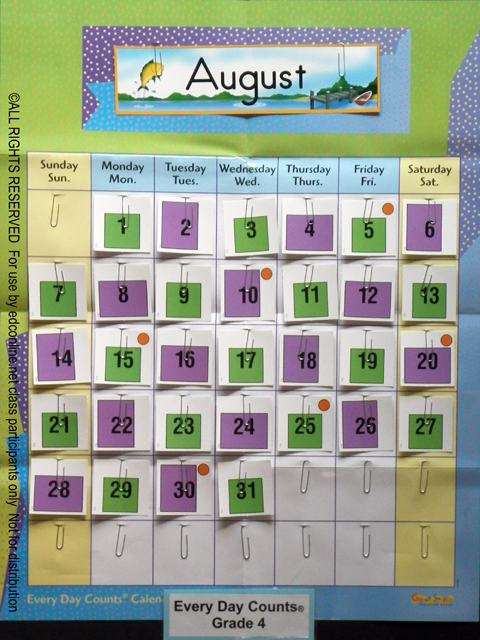
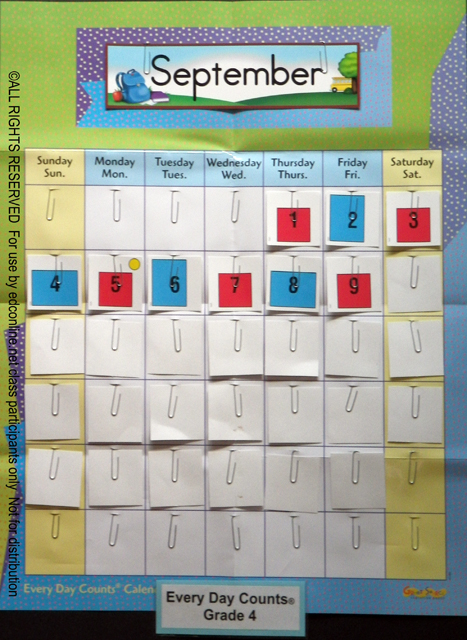
Instructor Notes:
For materials preparations, click again on Samples and select Getting Started 4.
Read Every Day Counts Teacher’s Guide, Kanter and Gillespie, Great Source, 2005 or 2012 edition, p. 1-4.
If you are on a year round schedule or begin school in August, you may want to use the August calendar pieces for your first month of school. If your school year starts in September, use the September pieces. Both sets of pieces present an ab odd and even pattern of alternating rectangles that are square and not square with an overlapping pattern of dots on all the multiples of five.
To introduce the calendar, have the class help place the piece for the first day of the month in the correct space and name its day of the week and its date (“Tuesday, September 1st”). Then catch up the pieces to the present date.
Name the colors, so everyone notices the red blue pattern. On several days during the month, have a number of students equal to the date stand and group themselves into pairs to prove a number on any red (or green, if August) piece is odd and any number on a blue (or purple, if August) piece is even. Students can see that if pairs come out even, it’s an even number and when there is one left out, it’s odd.
Later in the month, you can introduce the concept of common multiples for 2 and 5. When a dot appears on the 10th, 20th and 30th indicating these even multiples of two also break up into groups of 5 with no remainders, students can see they are multiples of both 2 and 5, and therefore called common multiples. By mid month ask the class to predict and describe the piece for any future date. Encourage students to explain their reasoning. This might be a good time to test each student to make sure they still are 1) fluent with their x2, x5, and x10 multiplication and division facts and 2) able to easily determine half of any multiple of 2, and 1/5 of any multiple of 5.
Grade 4: EDC Coin Counter – Day of School
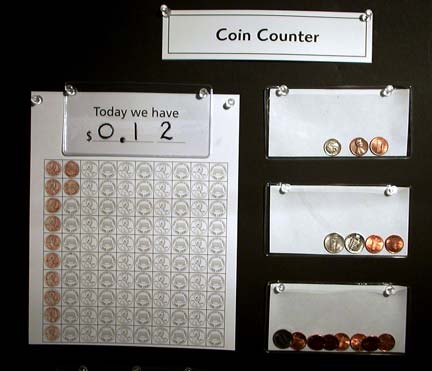
Instructor Notes:
For materials preparations, click again on Samples and select Getting Started 4.
Read Every Day Counts Teacher’s Guide, Kanter and Gillespie, Great Source, 2005 or 2012 edition, p. 26-27.
Each day of school use the top pocket of the Coin Counter to display the fewest possible coins equal in cents to the Day of School. Use the other two pockets to show additional combinations of coins equal to the day’s amount. Color in pennies on the 100 Penny Grid (TR9) to show the day’s total as hundredths of a dollar. From the 10th Day of School forward, when recording the total, help students see the digit in the tenth’s place refers to the completed columns of ten pennies equivalent to tenths of a dollar or dimes.
Grade 4: EDC Probability Graph – September
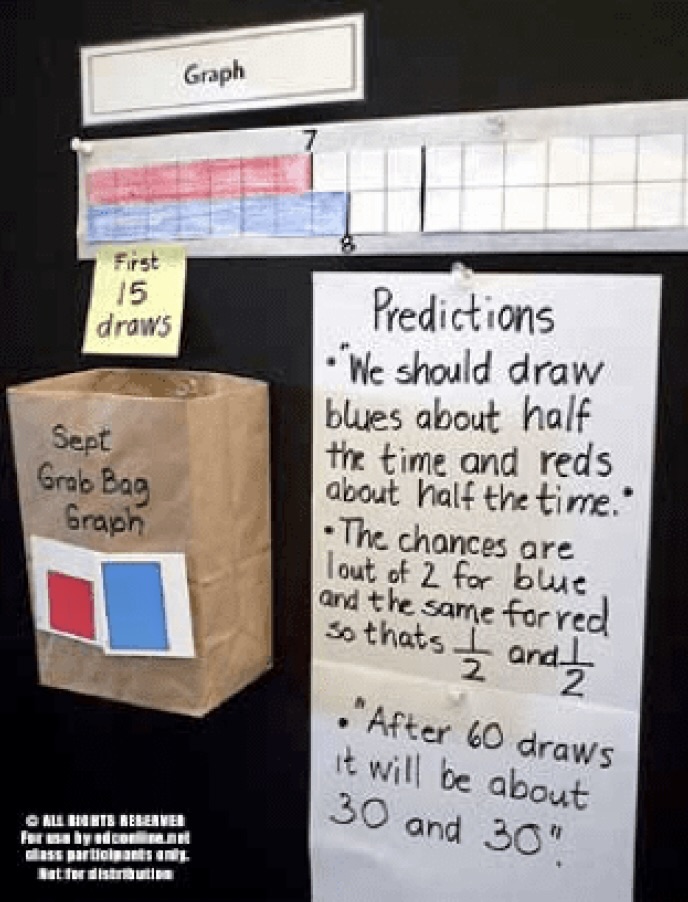
Instructor Notes:
For materials preparations, click again on Samples and select Getting Started 4.
Read Every Day Counts Teacher’s Guide, Kanter and Gillespie, Great Source, 2005 or 2012 edition, p. 28-30.
By early September we can look at the Calendar’s ab color pattern and see that half of the pieces are red and half blue on any even numbered day. Placing one red square rectangle and one blue non-square rectangle that match the color pattern (without numbers) into a lunch sack and drawing and replacing them a total of 60 times over the month gives children the chance to predict the total outcome based on the chances of drawing each color. Graphing the results of 15 draws (or substitute an even-numbered 20 draws) at a time, allows students to compare the cumulative data against the fact that reds and blues are equally likely to be drawn. Are there some surprises? As the sample increases will the results come closer to the probability of 1/2 red and 1/2 blue?


